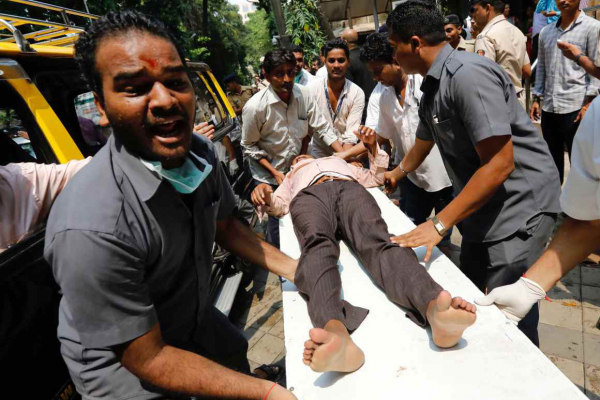I woke up to the sad news of yet again a stampede that occurred in the early morning today, the 27th October 2024, injuring nine people at the Bandra Terminus Railway station in Mumbai when passengers tried to board the train heading toward Gorakhpur, Uttar Pradesh. Stampedes are manmade disasters that take a heavy toll on people and happens due to natural human instincts. After every such incident, suggestions pour in on crowd management while blaming government or the authorities for lack of preparedness and facilities and some vested interest in communities try to bring in the religious angle to demean each other. Everything is forgotten very fast till the next stampede occurs. While human efforts cannot totally avoid stampedes as it involves mob psyche, it can definitely minimize the loss of human lives with preparedness.
Stampedes are influenced by human psyche and emotions and therefore, cut across all barriers of religion, organisation, rich, poor, developed or underdeveloped countries. There are several recent examples of stampedes where hundreds of lives are lost, like the one on foot overbridge connecting the local railway stations of Elphinstone Road, Mumbai, Hathras in Uttar Pradesh, the deadliest Hajj stampede in the holy city of Mecca, Vaishno Devi Shrine in Jammu and Kashmir, during a concert at the Astroworld Festival in Houston, Texas, USA, the so-called ‘Heizel drama’ in a Belgian soccer stadium, during a religious festival stampede in Israel, incidents of nightclub stampedes in Rhode island or Chicago, USA, a chaotic crowd stampede at the Falls Festival in Lorne on Victoria’s south-west coast, Australia, a crowd crush at a football match at Hillsborough Stadium in Sheffield, South Yorkshire, England, the people getting crushed during a Halloween celebration in Seoul, South Korea or even during the funeral ceremony of Qasem Soleimani, an Iranian major general, in Tehran; the list goes on, endlessly.
A stampede is an impulsive mass movement of a crowd that often results in injuries and deaths; another term that is used for this phenomenon is trampling. The evidence from post-mortem and triage suggest that most deaths occur due to two major reasons: I) when victims fall on the ground they sustain significant blunt force trauma to head resulting in fatal skull fractures or severe concussions and ii) when victims are trapped against some stationary obstacle like a wall, fence, gates, security barriers or other human bodies resulting in consistent and prolonged constriction of the chest cavity leading to suffocation, a condition known as compressional asphyxia. It takes just one or two minutes for a person’s blood oxygen levels to fall enough to cause a loss of consciousness and an average 4 minutes to die if there is lack of breathing.

At a large crowd gathering, if people panic realizing a possible threat to their lives or hear anything that can harm them, their first reaction is to escape and run for safety, irrespective of what harm they may cause to others. A bomb scares in a shopping mall or a fire alarm in a movie theatre could be good examples. This acts as a trigger and then mob mentality takes over where people lose control of their own emotions and get caught up in the emotions of the crowd. It’s a sort of hypnosis.
Since, a human crowd is typically a meta-animal that is driven by a basic instinct, it lacks in training to think rationally, though at individual level some may do so. So, in case of a religious gathering or in a musical concert of some famous singer, the entire crowd sentience is focused on either the religious preacher or on the singer. For some reason, if there is a stampede in such situations the crowd will immediately look for directions from either the religious preacher or the singer and if it is not forth coming, all hell will break loose.
So, in my opinion, stampede is a complex phenomenon that remains incompletely understood for want of a systematic study based on cases of different nature that needs categorisation. Though, there are several suggestions on crowd management, a study in totality taking into account the human psyche and emotions in certain situations is lacking at present, hampering formulation of evidence-based strategies for their prevention and management. There should a definition for a “minimum crowd” criteria for any gathering because for a stampede to occur, the size of the crowd doesn’t matter as much as the concentration. A 5000 people stampede in a restricted area can be as deadly as a 100,000 people stampede in an open space.
Given that the stampedes are a recurring phenomenon taking a heavy toll of human lives, it should be considered alongside other manmade disasters. There will always be a remote possibility of a stampede if a large enough crowd of people is allowed to assemble, regardless of any preventative or corrective measures taken by a government authority or the organizers of an event. At best the loss of human lives can be minimized with such efforts.






